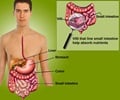Crohn's disease and Ulcerative colitis
Inflammatory bowel disease (IBD) has long been considered a disease that affects predominantly a Western population. The incidence and prevalence rates from Asian populations are much lower in comparison. More recent data, however, have shown significantly higher rates in Asians and time trend studies have shown an increase in the incidence of ulcerative colitis (UC) and a similar but lower rise in Crohn's disease (CD).
The disease occurs in the younger age group, but may also occur in childhood and old age. It is characterized typically by periods of quiescence and exacerbations.
Some of the features it shares in common with ulcerative colitis are: the immune basis for the disease, occurrence in close relatives of the disease, formation of ulcers in the intestines, symptoms such as abdominal pain, diarrhea and bleeding from the rectum. Both diseases do not have diet as an implicating factor in the cause, and respond to anti-inflammatory medicines.
Crohn’s disease of the small intestine viz. the ileum alone may transform into malignancy. Though Crohn’s disease can occur in the large bowel, peri-anal abscesses and fistulae are more common with this illness when compared to ulcerative colitis, which rarely gives rise to fistulae.













